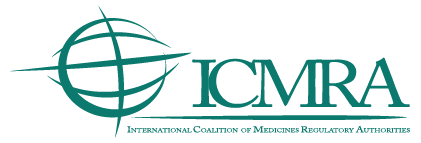ICMRA meeting: COVID-19 Real-World Evidence and Observational studies
22 July 2020
Chairs: Sophie Sommerer (Health Canada), Peter Arlett (European Medicines Agency)
1. Welcome and introduction
Sophie Sommerer and Peter Arlett welcomed and thanked everyone for participating in the third ICMRA meeting on COVID-19 Real-World Evidence and Observational studies.
2. Summary of ICMRA meeting of 19 May 2020
Peter Arlett summarised the meeting of 19 May where Guido Rasi encouraged the international partners to publish on their website as much information as possible on Covid-19 related activities, including on observational studies, to increase transparency and foster collaboration.
A preliminary discussion took place on the three topics to be addressed at this meeting.
3. Sharing experiences of work on observational studies including any new proposals for collaboration
This topic was not discussed as it was covered by the next agenda point.
4. Update on the three technical workstreams initiated at the 19 May 2020 ICMRA meeting –
a) Vaccine surveillance and vigilance (MHRA)
A representative from MHRA gave an update of the proposed COVID-19 vaccine pharmacovigilance network, which is being co-led with the Australian TGA. The key objectives are to share knowledge, experience and communications on pharmacovigilance planning activities, as well as the emerging benefit-risk profile of vaccines following vaccine deployment. It was noted that the activity of the network will not include the design or conduct of observational studies or the production of new guidelines or methods, given that other initiative in this area are already in progress (e.g. via the WHO GACVS). The focus of the network will be mainly as a forum to share intelligence, and to provide visibility of pharmacovigilance planning across the membership.
The meeting agreed the importance of implementing proactive and near real-time safety surveillance for COVID-19 vaccines and supported the objectives of this network. It was noted that a large number of ICMRA members may wish to join the network, and that effective management of the activities will be required. The post-deployment activity in sharing data was considered important, and it was recommended that this should focus on emerging safety signals rather than exchange of ADR data.
- Example of sharing plans (EMA) – Xavier Kurz
Xavier Kurz (EMA) presented plans for Covid-19 vaccine monitoring preparedness in Europe, as an example. He explained that a number of activities can be implemented before the marketing of vaccines, such as the definition of adverse events of interest, an estimation of their background rates, the setting-up of a network of data sources and an infrastructure for vaccine monitoring and investigation of vaccine safety, effectiveness and coverage. He presented the ACCESS project, which was contracted to an academic organisation. In answer to questions, he explained that the objectives include the collection of data on vaccine coverage in all European countries and the performance of a near-real time monitoring of vaccines safety.
The FDA presented their activities to prepare for real-time monitoring of vaccines with rapid cycle analysis techniques.
The first meeting of this technical workstream is expected to take place in the coming weeks.
b) Collaboration on pregnancy studies (EMA)
Corinne de Vries (EMA) explained that the technical expert working group on Covid-19 and medicines in pregnancy was created to foster international collaboration on studying the impact of Covid-19 infection and medicines in pregnancy and neonatal outcomes. Intended deliverables include the establishment of a worldwide network of data sources and the development of common protocol(s)/common data model(s) (CDM) as appropriate, to enable meta-analyses across the different global regions. Going forward, the idea is to set up a sustainable worldwide research network of data sources that can be mapped and leveraged for future drug safety evaluation in pregnancy.
This group had its first meeting on 2 July with the participation of WHO, FDA, HC, MEB, AIFA, MHRA and EMA. The following was agreed:
- Firstly, an inventory will be made of the planned and ongoing projects on this topic to help ensure alignment between regions where possible.
- Secondly, for each of these projects, it will be established whether they have potential for contributing to a meta-analysis, or whether the study type is such that it cannot be used for these purposes and should remain in a descriptive inventory only, for potential future reference.
The inventory is planned to be ready for late August and can be made available to other interested ICMRA members who would like to join. This information will enable planning of the work going forward.
Finally, EMA-funded research in this area was discussed; EMA confirmed there is potential overlap between the different studies (ACCESS and ConSIGN) and this will be addressed in the study designs. However, the fact that the same academic organisation has been contracted for ACCESS and ConSIGN is an important element that will decrease the risk of duplication.
c) Building international cohorts (HC)
Gayatri Jayaraman (HC) explained that the COVID-19 international cohorts working group had an initial meeting on 9 July 2020. Membership includes representation from EMA, FDA, AEMPS and Health Canada. The WG agreed on a set of criteria which will enable the prioritisation of key regulatory/public health research question(s) for international collaboration, including the need for a large sample size, important rather than urgent research topics, regional comparisons, development of novel methodologies or infrastructure, overall impacts on public health and need for sub-cohorts.
It is anticipated that each regulator consults internally and prioritises research questions/sub-questions for international collaboration based on the above criteria. These key questions will be finalised in a 2nd call planned 29 July. Common methodologies/approaches to optimise the use of observational data to address these questions will also be discussed.
5. Summary and next steps:
The leads of the three technical workstreams will identify and discuss cross-cutting topics. They will be discussed in the next plenary meeting.
Sophie Sommerer closed the meeting by thanking all international partners for their participation.

